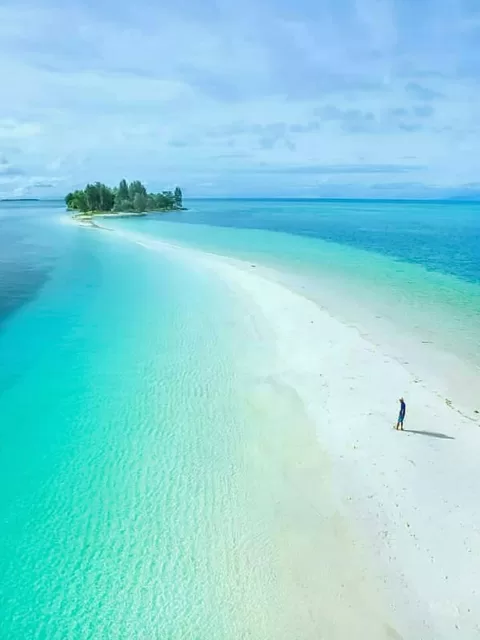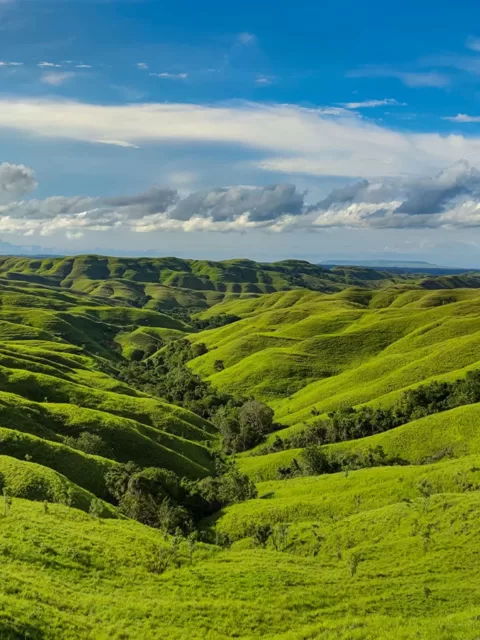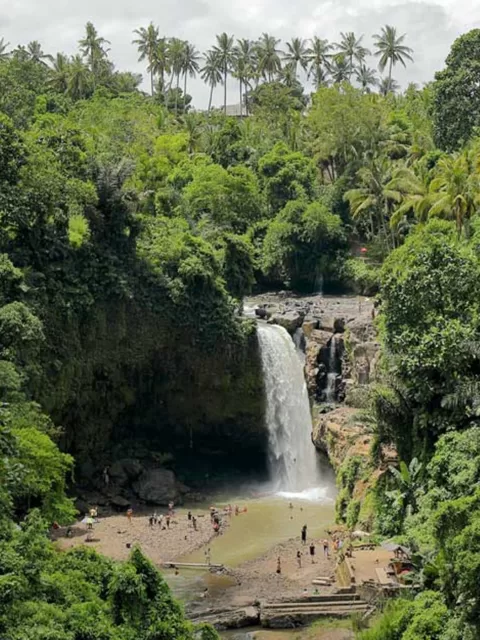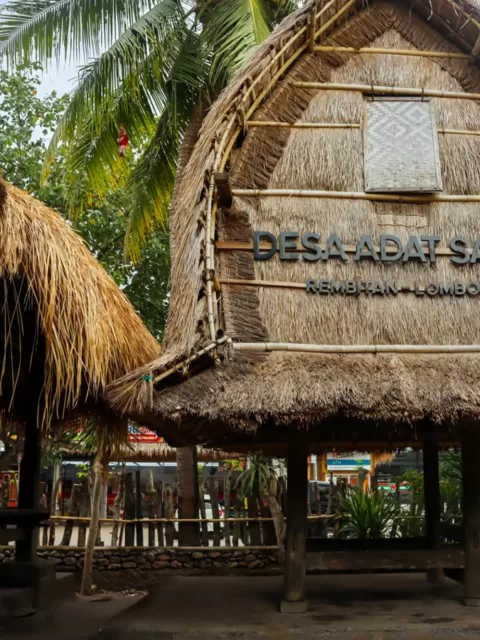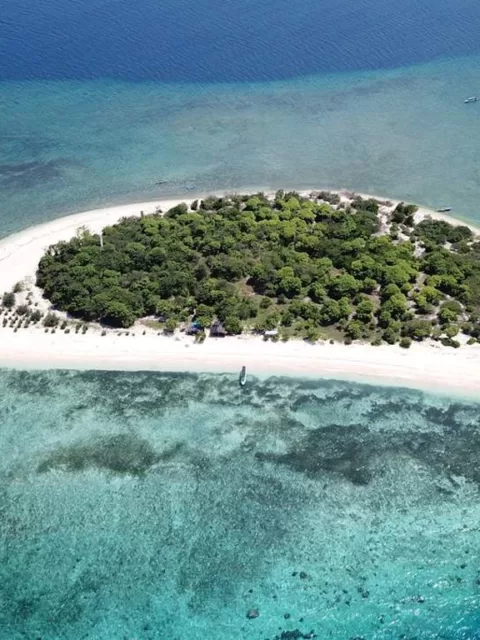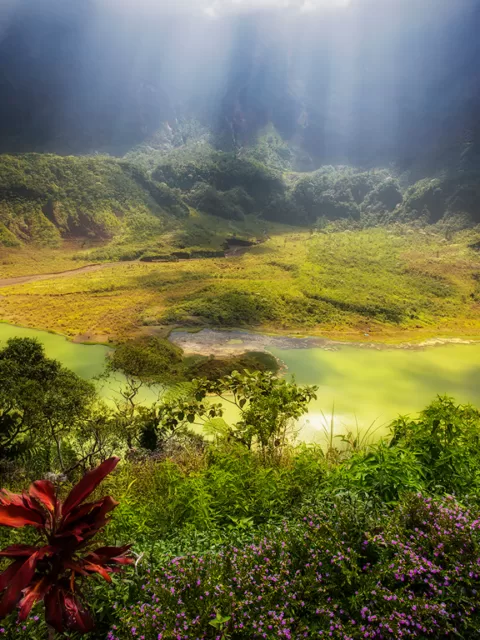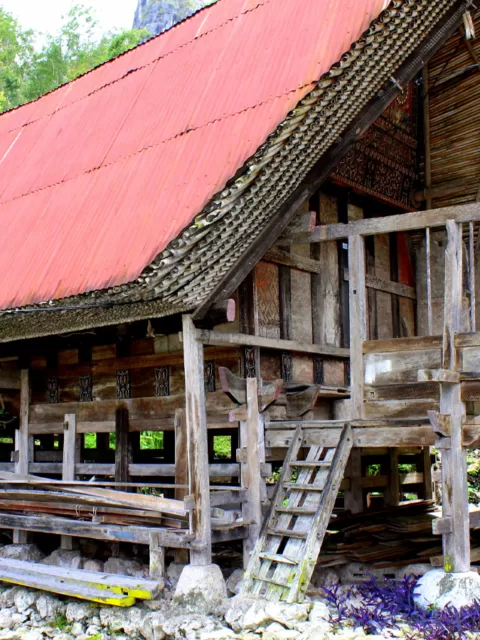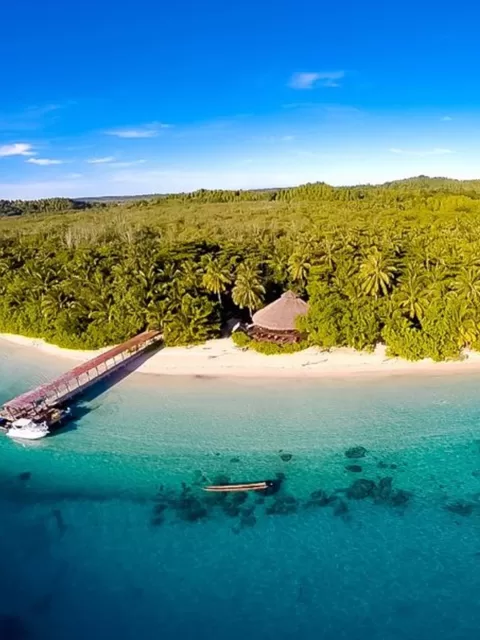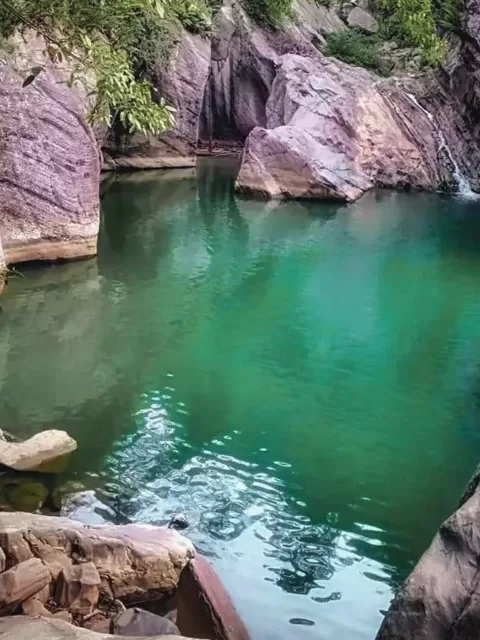Wakatobi National Park: A Paradise for Divers and Snorkelers
Nestled in the heart of the Coral Triangle, the global epicenter of marine biodiversity, Wakatobi National Park emerges as a haven for divers and snorkelers. This pristine marine paradise, located in the remote reaches of Southeast Sulawesi, Indonesia, boasts an underwater world teeming with life and a vibrant coral kingdom that beckons adventurers from around the globe. As we embark on this journey to Wakatobi, we will explore the park’s astounding marine biodiversity, unravel the secrets of its coral reefs, delve into world-class diving experiences, and uncover the magic of snorkeling in this underwater Eden.
Wakatobi National Park: An Overview
In the beginning
Wakatobi, a portmanteau derived from the names of its four main islands—Wangi-Wangi, Kaledupa, Tomia, and Binongko—was declared a national park in 1996. It is a UNESCO Marine Biosphere Reserve that spans over 1.4 million hectares, encompassing not only the islands but also their surrounding waters. The park was established to conserve its extraordinary marine life, protect the vibrant coral reefs, and provide an undisturbed habitat for a multitude of species.
Geographical features
Wakatobi’s geographical attributes are equally captivating. The park is located at the heart of the Coral Triangle, a region celebrated for its unrivaled marine biodiversity. The island’s remote location has shielded them from the ravages of mass tourism, preserving the natural splendor of the area. Beyond its underwater treasures, the lush landscapes, white sandy beaches, and crystal-clear waters combine to create an idyllic setting for those seeking an escape into nature.
Conservation efforts
Wakatobi National Park is more than just a beautiful destination; it’s a testament to the importance of conservation. The park’s protected status has led to initiatives aimed at preserving coral reefs and marine biodiversity. These efforts are not only environmental but also community-focused, promoting sustainability and the involvement of local populations in safeguarding their natural heritage.
Underwater Wonders of Wakatobi
Diverse marine life
One of the hallmarks of Wakatobi National Park is its rich marine biodiversity. The waters surrounding the islands are home to an astonishing array of marine life, including over 90 species of corals and a myriad of fish species, many of which are rare and unique to the region. From vibrant reef fish to majestic pelagic species, the park offers a kaleidoscope of marine wonders waiting to be discovered.

Pristine coral reefs
Wakatobi is renowned for its pristine coral reefs. The reefs here are among the most well-preserved in the world, boasting a thriving ecosystem that provides a vital habitat for countless marine species. The park’s coral gardens are a mesmerizing sight, with their intricate formations and a cornucopia of colors that create a mesmerizing underwater landscape.

Unique species and underwater landscapes
The underwater landscapes of Wakatobi are as diverse as the life that inhabits them. From dramatic drop-offs to vibrant coral walls and tranquil lagoons, divers and snorkelers have the chance to explore a variety of settings. The park is also home to several unique and endemic species, including the enigmatic Wangi-Wangi seahorse and the elusive pygmy seahorse, making it a paradise for macro and critter enthusiasts.
Diving in Wakatobi National Park
World-class diving opportunities
Wakatobi is a world-class diving destination, offering some of the most exceptional dive sites on the planet. From renowned dive sites like the House Reef to the adrenaline-pumping experiences at the Outer Reef, the park caters to divers of all skill levels. The House Reef is particularly celebrated for its incredible macro and muck diving, allowing divers to encounter an array of tiny and fascinating critters.

Popular dive sites and their unique features
Among the numerous dive sites, some stand out as must-visit locations for divers. The Roma, for example, is a submerged pinnacle that attracts pelagic species, making it a popular spot for thrilling encounters with sharks and schools of fish. Other sites, like the Coral Garden and Kansas, showcase the park’s stunning coral formations and rich marine life.
Diving conditions and accessibility
Diving in Wakatobi is characterized by excellent visibility, often exceeding 30 meters, and water temperatures that make it comfortable for diving year-round. The park’s remote location may seem intimidating, but it offers exclusivity and seclusion. The best way to reach Wakatobi is by flying from Bali to the nearby Wangi-Wangi Island. From there, resorts and liveaboards provide easy access to the dive sites.
Snorkeling Adventures
Snorkeling opportunities for all skill levels
Wakatobi is not just a paradise for divers; it’s also an ideal destination for snorkelers of all skill levels. The park offers a wide range of snorkeling opportunities, from shallow coral gardens to vibrant drop-offs. Even if you’ve never snorkeled before, you can still immerse yourself in the park’s marine wonders with ease.
Accessible snorkeling sites with vibrant marine life
Some of the best snorkeling sites in Wakatobi are easily accessible from the shore, making it convenient for snorkelers. The coral gardens of the House Reef, for instance, are a delightful place to explore, offering close encounters with a diversity of fish and corals. For a more relaxed experience, the tranquil waters of the lagoons provide a serene setting for snorkeling.

Tips for safe and enjoyable snorkeling experiences
To make the most of your snorkeling adventure in Wakatobi, consider these tips. Ensure you have the right snorkeling gear, including a mask, snorkel, and fins. It’s also essential to use reef-safe sunscreen to protect the fragile coral reefs. While snorkeling, maintain a respectful distance from marine life and never touch or disturb the corals.
Conservation Efforts in Wakatobi
The park’s commitment to marine conservation
Wakatobi National Park is not only a sanctuary for divers and snorkelers but also a dedicated hub for marine conservation. The park’s management actively collaborates with organizations and institutions to monitor and preserve its underwater ecosystems. Their conservation efforts extend to reef restoration, research, and community education programs.
Initiatives to protect coral reefs and marine biodiversity
The protection of coral reefs and marine biodiversity is at the forefront of Wakatobi’s conservation initiatives. Coral restoration programs, such as coral transplantation and maintenance of artificial reefs, play a significant role in preserving the park’s coral ecosystems. The park’s conservation team conducts regular surveys to monitor the health of the reefs and track any signs of degradation.
Involvement of local communities in preservation
Wakatobi’s conservation efforts extend beyond marine life; they also encompass local communities. By actively involving and engaging local populations, the park fosters a sense of ownership and responsibility among residents. Initiatives like the community-based MPA (Marine Protected Area) program empower communities to take part in the protection of their marine resources.
Accommodations and Travel Tips
Information on accommodations and resorts in Wakatobi
Accommodations in Wakatobi cater to a range of preferences, from luxury resorts to comfortable dive lodges. Resorts like Wakatobi Dive Resort provide a haven for divers and snorkelers, with easy access to the park’s prime dive sites. These resorts often offer all-inclusive packages that simplify travel logistics.
Travel tips, including how to get there and the best times to visit
Wakatobi’s remote location can initially appear challenging to access, but it’s well worth the journey. The most common way to reach Wakatobi is by taking a flight from Bali to Wangi-Wangi Airport, followed by a short boat transfer to your chosen resort. It’s advisable to plan your trip well in advance, as flights and accommodations can fill up quickly, especially during peak diving seasons.
Suggested resources for trip planning
To make the most of your visit to Wakatobi, consider using trusted resources for trip planning. Dive operators, travel agencies, and resort websites provide valuable information, including details on accommodation options, dive packages, and itineraries. Reading travel blogs and forums can also offer insights from experienced travelers who have explored the wonders of Wakatobi.
Local Culture and Traditions
Exploring the cultural richness of the Wakatobi region
Beyond its marine splendors, Wakatobi is home to a rich tapestry of cultures and traditions. The Wakatobi region is inhabited by various ethnic groups, each with its unique customs and practices. Visitors can immerse themselves in the local way of life, from witnessing traditional ceremonies to participating in cultural events.

The coexistence of local traditions with marine conservation
One of the most remarkable aspects of Wakatobi is the harmonious coexistence of local traditions with marine conservation efforts. The park’s management actively collaborates with local communities to ensure that conservation practices respect and incorporate traditional values. This fusion of cultural heritage and ecological preservation creates a unique and mutually beneficial relationship.
Opportunities for cultural experiences
Visitors to Wakatobi can partake in a range of cultural experiences, such as witnessing traditional dances and rituals, visiting local villages, and attending community events. These interactions provide a deeper understanding of the region’s heritage and its role in protecting the marine ecosystems that have sustained communities for generations.
Wakatobi National Park: Beyond Diving and Snorkeling
Showcasing other activities and attractions in the area
While diving and snorkeling are the primary draws of Wakatobi National Park, the region offers a range of additional activities for those seeking diverse experiences. Nature enthusiasts can explore the islands’ lush interiors through hikes and wildlife watching, uncovering the rich biodiversity of the terrestrial ecosystems.

Mention land-based adventures, such as hiking and wildlife-watching
Wakatobi’s terrestrial landscapes are equally captivating. The islands offer opportunities for hiking and exploring pristine forests, witnessing unique wildlife, and discovering remote villages. From birdwatching to guided treks, land-based adventures allow visitors to appreciate the entirety of Wakatobi’s natural beauty.
Encourage a holistic exploration of Wakatobi
To truly grasp the essence of Wakatobi National Park, it’s essential to venture beyond its waters. Encourage visitors to engage in a holistic exploration, where they balance their underwater adventures with land-based experiences that showcase the full spectrum of Wakatobi’s ecological diversity.
Final Thoughts
In conclusion, Wakatobi National Park stands as an enchanting marine paradise that beckons divers, snorkelers, and nature enthusiasts. Its unrivaled marine biodiversity, pristine coral reefs, world-class diving sites, and snorkeling opportunities for all skill levels make it a haven for underwater exploration. The park’s commitment to marine conservation, involvement of local communities, and coexistence of cultural traditions with ecological preservation elevate its significance beyond its natural beauty.
As you reflect on your visit to Wakatobi, take with you the knowledge that this remote Indonesian gem is not only a sanctuary for marine life but also a testament to the power of conservation and sustainable tourism. Wakatobi National Park encapsulates the magic of Southeast Sulawesi, and the allure of its underwater paradise is matched only by the beauty of its terrestrial landscapes and the warmth of its local communities. For divers, snorkelers, and nature enthusiasts, Wakatobi remains a paradise to be explored, celebrated, and protected for generations to come.



